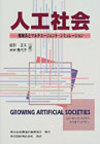書籍案内
書籍案内
-
人工社会-複雑系とマルチエージェント・シミュレーション-
Joshua M.Epstein、Robert Axtell (著)/服部正太、木村香代子(訳)
1999年12月25日 共立出版(株)
3,600円+税本書は、米国ブルッキングス研究所に所属するJoshua M.Epstein氏およびRobert Axtell氏によるGrowing Artificial Societiesの全訳である。副題Social Science from the Bottom Upが示すように、従来の社会科学の方法論をこえた、個別エージェントの行動ルールをつみあげた形のシミュレーションモデルをSugarscapeと名付け、新しい社会科学分析の方法について論じている。
本書は、モデルの概念的な説明から説き起こし、モデルにおける生と死、文化の問題、経済の課題、疫学分野でのシミュレーション事例を取り上げ、最後に今後の方向性を示唆した注目すべき著作である。 -
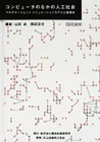
コンピュータのなかの人工社会:マルチエージェントシミュレーション モデルと複雑系
 山影進、服部正太(編)
山影進、服部正太(編)
2002年8月10日 共立出版(株)
4,200円+税本書は、マルチエージェントシミュレーションの可能性を社会現象への応用という方向に広げ、そして、いかにマルチエージェントシミュレーションが簡便容易にできるようになったかを示す一冊である。(株)構造計画研究所によって開発された、マルチエージェント・ シミュレータ、KK-MASを使ってモデルが構築されており、付属のCD-ROMにより、実際にシミュレーション・モデルを実行し確認することができる。 -
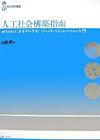
人工社会構築指南:artisocによるマルチエージェント・シミュレーション入門
 山影進 (著)
山影進 (著)
2007年1月30日 (有)書籍工房早山
3,600円+税数学を使って、複雑系の問題を解決するための入門書です。
本書は、マルチエージェント・シミュレーション artisoc を使い、「人工社会」という新しい社会分析の発想と手法を、懇切に説く完全版入門書です。付属のCD-ROMにより、実際にシミュレーション・モデルを構築、実行することができます。科学研究費補助金学術創成研究費による「マルチエージェント・シミュレータによる社会秩序変動の研究」(平成15-19年度)の成果の一部です。 -
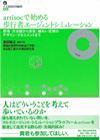
artisocで始める歩行者エージェントシミュレーション:原理・方法論から安全・賑わい空間のデザイン・マネジメントまで
 兼田敏之 (著)
兼田敏之 (著)
2010年4月16日 (有)書籍工房早山
4,200円+税本書は、近年、建築学や都市計画学の分野において、主に欧米での発展が著しい 歩行者エージェントシミュレーションの概念および手法について、マルチエージェントシミュレーションプラットフォームである「artisoc」(アーティソック)を用いた実例を交えて紹介した入門書です。明石花火大会歩道橋事故などの群集事故分析、津波や超高層ビル火災など災害時の避難計画の策定、ショッピングセンターなど商業施設や遊園地における場内アナウンスや賑わいイベント効果の予測、歩行空間デザイン等は、これまで建築物の構造の観点で検討されていましたが、歩行者エージェントシミュレーションにより歩行者行動の観点からも検討することができます。
本書の構成は、第Ⅰ部に歩行者研究の歴史と1990年代以降に隆盛した人工社会パラダイムなど、本書を学ぶ上での基本概念の説明、第Ⅱ部に実用指向の歩行者モデリングに欠かせない歩行者の寸法、密度、群集流の速度などといった歩行者行動や群集流の特性について、実測データを中心とした解説、第Ⅲ部にartisocを用いて作成された歩行者エージェントシミュレーションの実例、第Ⅳ部に歩行者エージェントモデリングが拓く研究領域の紹介からなります。さらに、付録の CD-ROMには、artisocの機能限定版であるartisoc textbook 2.6 と本書で使用したサンプルモデルが入っています。また、本書で採用した事例には今年で第10回を迎えた構造計画研究所主催の「MASコンペティション」参加作品が多く含まれています。
対象とする読者は、建築や都市計画に関わる方々はもとより、複雑系、エージェント・ベースド・社会シミュレーション(ABSS:Agent-Based Social Simulation)を学ぶ広範な分野の方々を想定しております。それらの方々が、自らの関心で歩行者エージェントシミュレーションに触れる手引となるような内容となっています。 -
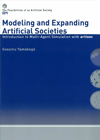
Modeling and Expanding Artificial Societies : Introduction to Multi-Agent Simulation with artisoc
 Susumu Yamakage(著)
Susumu Yamakage(著)
2009年11月18日 (有)書籍工房早山
4,500円+税This is a comprehensive introductory book on the new idea and the method of social analysis called "artificial societies". You can create the actual model and run the simulation by using "artisoc", the Multi-Agent simulator on the CD-ROM attached to this book. -
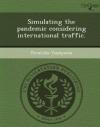
Simulating the Pandemic Considering International Traffic
 Teruhiko Yoneyama (著)
Teruhiko Yoneyama (著)
2009年9月30日 Proquest, Umi Dissertation Publishing
US$69.00Pandemics can cause immense disruption and damage to communities and societies. Thus far, modeling of pandemics has focused on either large-scale difference-equation models like the SIR and the SEIR models, or detailed micro-level simulations, which are harder to apply at a global scale. This thesis introduces a hybrid model for the spread of pandemics considering both global infections and local infections. We hypothesize that the spread of an infectious disease between regions is significantly influenced by global traffic patterns and the spread within a region is influenced by local conditions. Thus we model the spread of pandemics considering the connections between regions for the spread of global infections and population and population density based on the SEIR model for the spread of local infections.
We validate our hybrid model by carrying out a number of simulation studies using available data on population, population density, and traffic networks between different regions. We show the power of our approach in both modern and historical contexts. In the modern era, we model the SARS pandemic of 2002-03 and the H1N1 influenza pandemic of 2009- using data on international travel, and demonstrate the close relationship between modern travel networks and the spread of disease. In the historical context, it is difficult to find high-quality travel data. However, we can use data on trade and on troop movements during wars as a proxy for the connectedness of different regions. We use this to model the influenza pandemic of 1918-19 considering the effect of the First World War and the influenza pandemic of 1957-58 considering the effect of the Cold War. We compare our simulation results with the historical record, and find influential factors for the spread of a pandemic. In addition to demonstrating the benefits of our modeling approach for understanding and perhaps in the future mitigating the spread of disease, this methodology also allows us to simulate counterfactual situations. We simulate another historical scenario and find the influence of a historical event upon the spread of a pandemic by comparing the simulation results. Our simulation studies show that international relationships and global traffic patterns significantly influence the spread of pandemics.

